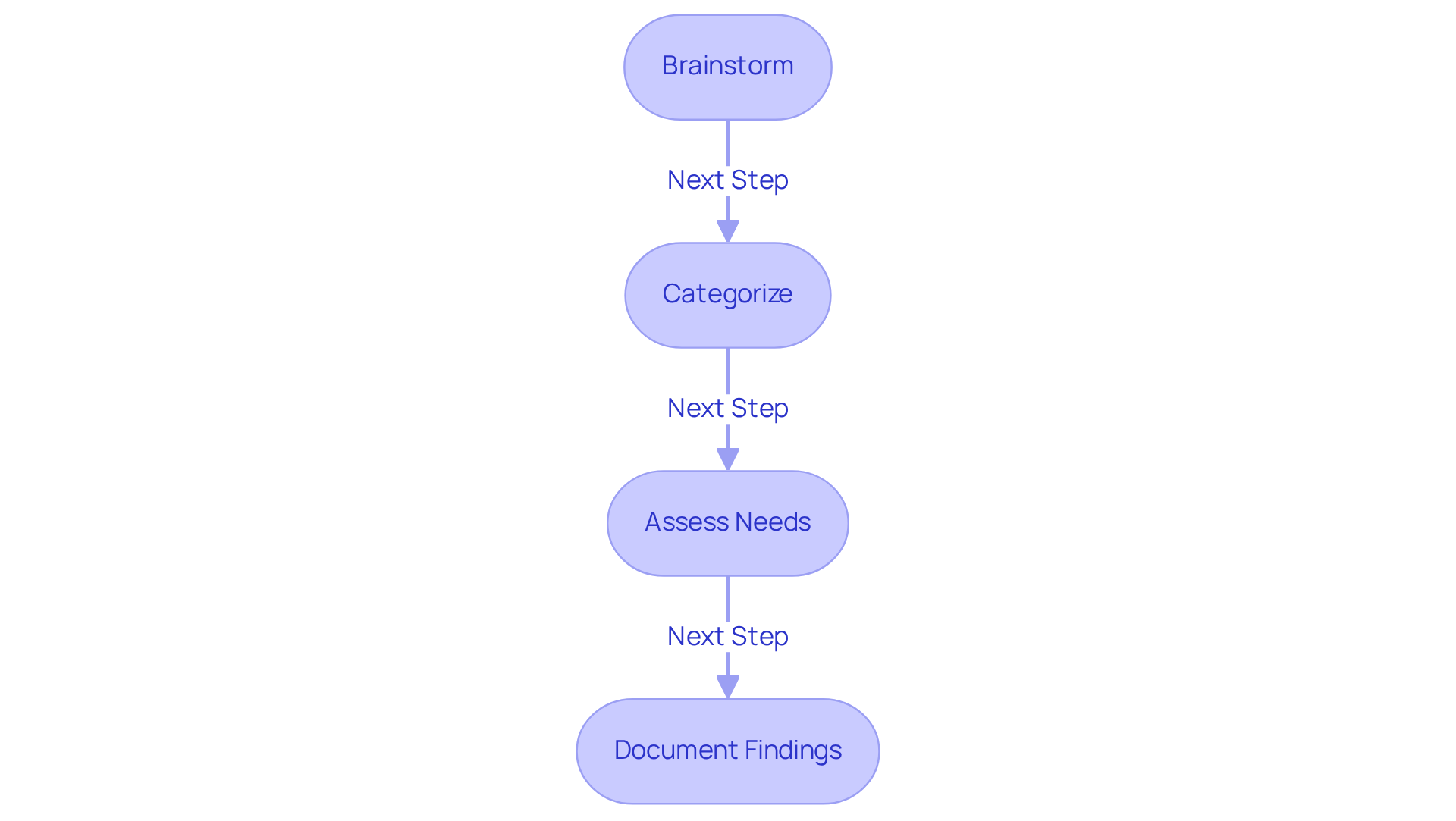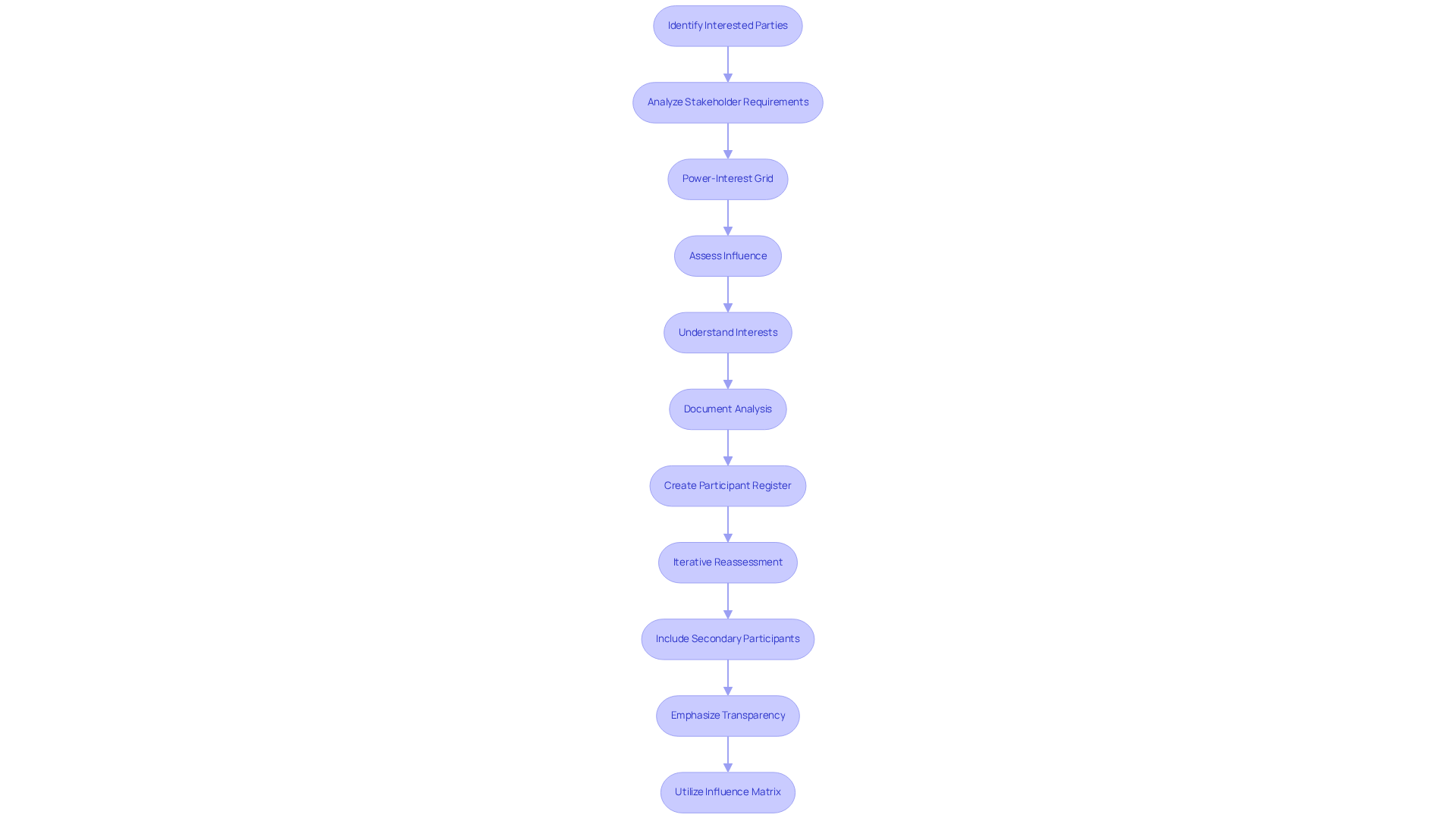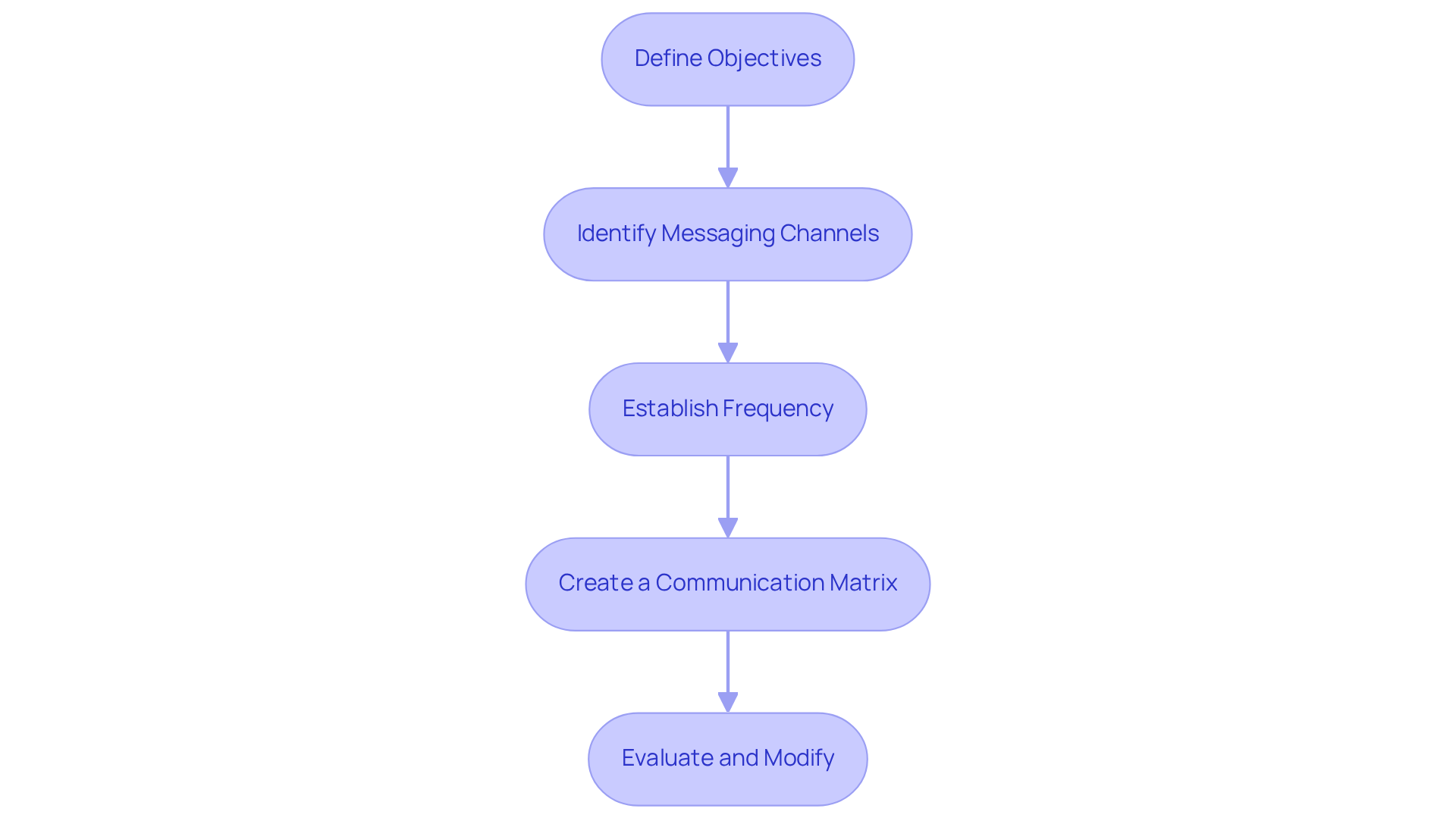Overview
Mastering stakeholder requirements in project management is essential for success. It involves the identification, analysis, and engagement of stakeholders to ensure their needs and expectations are met throughout the project lifecycle. Early engagement and continuous communication are crucial; they foster collaboration, mitigate risks, and ultimately enhance project outcomes by aligning objectives with stakeholder interests. By prioritizing these elements, project managers can significantly improve the likelihood of achieving desired results.
Introduction
Navigating the intricate landscape of project management demands a profound understanding of stakeholder dynamics, as these individuals and groups wield significant influence over outcomes. Mastering the art of stakeholder engagement allows project managers to tap into a wealth of insights, ensuring that projects not only achieve their objectives but also resonate with all parties involved. However, the challenge lies in effectively identifying, analyzing, and communicating with these stakeholders.
How can project leaders strike the right balance between addressing diverse needs and maintaining project momentum?
Define Project Stakeholders and Their Importance
Participants in the initiative encompass individuals or groups with a vested interest in the endeavor, possessing the capacity to influence or be influenced by its outcomes. This category includes internal participants, such as team members and management, as well as external entities like clients, suppliers, and community members. Recognizing the significance of these interested parties is essential, as their perspectives, resources, and support can profoundly impact the success of the initiative.
Engaging stakeholders early in the initiative lifecycle not only aids in identifying potential risks but also ensures that objectives align with stakeholder requirements in project management, thereby fostering a collaborative environment. Such proactive involvement can lead to effective resource allocation, risk mitigation, and enhanced visibility throughout the endeavor, ultimately contributing to superior outcomes.
Furthermore, conducting a comprehensive business evaluation at the onset of the initiative can help identify underlying issues and formulate a strategic plan that leverages strengths while addressing weaknesses. Continuous performance monitoring through real-time analytics facilitates ongoing relationship-building with interested parties, ensuring their needs are met and that lessons learned from previous initiatives are effectively applied.
Additionally, determining the optimal method and frequency for engaging each participant is crucial for efficient involvement and progress updates. By establishing a foundation of trust and teamwork, managers can leverage relationships with involved parties, including sponsors and investors who provide essential funding and support, to navigate challenges and achieve success.
A clearly defined communication and engagement strategy is vital for managing stakeholder requirements in project management, promoting collaboration, and ensuring that all parties remain informed and engaged throughout the project lifecycle.

Identify Stakeholders and Their Needs
Efficient management of interested parties requires recognizing their needs and understanding the stakeholder requirements in project management. This process entails creating a comprehensive list of all potential parties through methods such as brainstorming sessions, mapping, or utilizing analysis matrices.
Steps to Identify Stakeholders:
- Brainstorm: Gather your team to compile a list of individuals and groups who may be affected by or have an interest in the initiative.
- Categorize: Classify participants into primary (those directly involved) and secondary (those indirectly affected) groups to clarify their roles.
- Assess Needs: For each participant, evaluate their specific requirements, expectations, and concerns regarding the initiative. This assessment can be conducted through surveys, interviews, or focus groups, ensuring that all voices are heard.
- Document Findings: Create a register of interested parties that captures their names, roles, interests, and needs. This document will function as a reference throughout the lifecycle, facilitating ongoing communication and engagement.
Employing these techniques not only improves transparency but also cultivates a cooperative atmosphere where participant input is valued. As Helen Keller noted, 'Alone we can do so little; together we can do so much.' By understanding and addressing the stakeholder requirements in project management, project managers can significantly enhance project outcomes and satisfaction levels.

Analyze Stakeholder Influence and Interests
Upon identifying interested parties, the subsequent step involves analyzing the stakeholder requirements in project management and their influence and interests. This critical analysis aids in prioritizing stakeholder requirements in project management, helping to identify which participants warrant greater focus and resources.
-
Power-Interest Grid: Employ a power-interest grid to categorize participants based on their level of influence and interest in the endeavor. This classification will help identify key players who require close management.
-
Assess Influence: Evaluate the extent of impact each participant has on outcomes. Engage high-power participants regularly, while maintaining less frequent communication with low-power contributors.
-
Understand Interests: Ascertain the objectives each party aims to achieve from the endeavor. Gaining insight into stakeholder requirements in project management will enable you to address concerns effectively and align project goals with their expectations.
-
Document Analysis: Record your findings in a participant analysis report, which will guide your interaction strategies moving forward.
-
Create a Comprehensive Participant Register: Develop a detailed participant register to facilitate efficient engagement and tracking of interactions.
-
Iterative Reassessment: Recognize that interest group analysis is a cyclical process requiring continuous evaluation throughout the endeavor's lifecycle to adapt to evolving dynamics.
-
Include Secondary Participants: Take into account secondary participants, such as vendors and government entities, who may also influence or be impacted by the project.
-
Emphasize Transparency and Inclusiveness: Ensure that your management approach towards interested parties is transparent and inclusive, fostering trust and collaboration.
-
Utilize the Influence Matrix: Consider employing an influence matrix to further map individuals' power and interest levels.
By systematically evaluating participants against stakeholder requirements in project management through the power-interest grid and incorporating these additional elements, managers can enhance interactions, mitigate risks, and ultimately improve the likelihood of success.

Develop a Stakeholder Communication Plan
Developing a participant engagement strategy is essential for fostering openness and involvement throughout the initiative's lifecycle. Here’s a structured approach to crafting an effective plan:
- Define Objectives: Clearly articulate the aims of your outreach efforts, such as keeping interested parties informed, soliciting feedback, or garnering support for the initiative.
- Identify Messaging Channels: Choose appropriate avenues for interaction, including emails, meetings, newsletters, or project management tools, to ensure messages reach interested parties effectively.
- Establish Frequency: Determine the frequency of communication for each group of interested parties. High-power participants may require more frequent updates, while others may need less regular communication.
- Create a Communication Matrix: Develop a matrix that specifies who will communicate what information, through which channels, and at what frequency. This guarantees prompt delivery of crucial information to all parties involved.
- Evaluate and Modify: Frequently review the strategy and implement changes based on feedback from involved parties and progressing developments.
Efficient interaction is vital for achieving success, as it not only keeps interested parties informed but also enhances their involvement and support. By implementing a well-organized communication strategy, project managers can navigate complexities and meet stakeholder requirements in project management while cultivating stronger connections with interested parties. For more information on enhancing your stakeholder engagement strategies, feel free to reach out to Transform Your Small/ Medium Business at +1 (239) 428-9074 or visit us at 3200 Bailey Ln, Naples, FL 34105.

Conclusion
Understanding and managing stakeholder requirements is pivotal for ensuring project success. By recognizing the diverse roles and interests of stakeholders, project managers can effectively align objectives and foster collaboration. This comprehensive approach not only enhances transparency but also empowers teams to navigate challenges and leverage the strengths of all involved parties.
The article delves into critical strategies for identifying stakeholders, analyzing their influence, and developing robust communication plans. Key steps include:
- Creating a comprehensive stakeholder register
- Employing analytical tools like the power-interest grid
- Establishing clear communication channels
These practices enable project managers to prioritize stakeholder needs and maintain ongoing engagement, which is essential for fostering trust and cooperation throughout the project lifecycle.
Ultimately, the significance of stakeholder engagement cannot be overstated. By prioritizing effective communication and actively involving stakeholders, project managers can significantly improve project outcomes and satisfaction levels. Embracing these best practices will not only enhance project success in the present but also set a strong foundation for future initiatives, ensuring that all voices are heard and valued in the project management process.
Frequently Asked Questions
Who are considered project stakeholders?
Project stakeholders are individuals or groups with a vested interest in the initiative, capable of influencing or being influenced by its outcomes. This includes internal participants like team members and management, as well as external entities such as clients, suppliers, and community members.
Why is it important to engage stakeholders early in the initiative lifecycle?
Engaging stakeholders early helps identify potential risks and ensures that project objectives align with stakeholder requirements. This proactive involvement fosters a collaborative environment, leading to effective resource allocation, risk mitigation, and enhanced visibility throughout the initiative.
What role does a comprehensive business evaluation play at the start of an initiative?
A comprehensive business evaluation at the beginning of an initiative helps identify underlying issues and formulates a strategic plan that leverages strengths while addressing weaknesses, contributing to the overall success of the project.
How can continuous performance monitoring benefit stakeholder relationships?
Continuous performance monitoring through real-time analytics facilitates ongoing relationship-building with stakeholders, ensuring their needs are met and that lessons learned from previous initiatives are effectively applied.
What is the significance of determining the optimal method and frequency for stakeholder engagement?
Determining the optimal method and frequency for engaging stakeholders is crucial for efficient involvement and progress updates. It helps establish a foundation of trust and teamwork, which is essential for navigating challenges and achieving success.
Why is a communication and engagement strategy vital in project management?
A clearly defined communication and engagement strategy is vital for managing stakeholder requirements, promoting collaboration, and ensuring that all parties remain informed and engaged throughout the project lifecycle.




